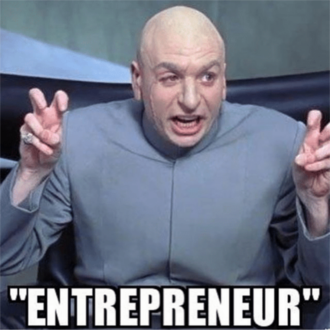User:Artemis gryllaki/Special Issue 7: Difference between revisions
No edit summary |
No edit summary |
||
| Line 116: | Line 116: | ||
<div style='text-align: left; padding-top: 50px; overflow: auto; left; font-family: "Arial Narrow", Arial, sans-serif; font-size: 17px;'> | <div style='text-align: left; padding-top: 50px; overflow: auto; left; font-family: "Arial Narrow", Arial, sans-serif; font-size: 17px;'> | ||
<div style="margin: auto; width: 95%;"> | <div style="margin: auto; width: 95%;"> | ||
Software creates new spatialities in everyday life, from supermarket checkout lines to airline flight paths. After little more than half a century since its initial development, computer code is extensively and intimately woven into the fabric of our everyday lives. From the digital alarm clock that wakes us to the air traffic control system that guides our plane in for a landing, software is shaping our world: it creates new ways of undertaking tasks, speeds up and automates existing practices, transforms social and economic relations, and offers new forms of cultural activity, personal empowerment, and modes of play.<br><br>Software is examined from a spatial perspective, analyzing the dyadic relationship of software and space. Kitchin and Dodge develop a set of conceptual tools for identifying and understanding the interrelationship of software, space, and everyday life. | |||
</div> | </div> | ||
<div style="margin: auto; width: 95%; font-style: oblique; color: orchid;"> | <div style="margin: auto; width: 95%; font-style: oblique; color: orchid;"> | ||
Revision as of 16:05, 7 September 2019
Start up, Burn out: Life Hacks
Themes, Theory & Research
| Burn Out | Life Hacks | Entrepreneurship | Entreprecariat | ||||||||||
| Precarity | Productiviy | Procrastination | Efficiency | Insecurity | |||||||||
| Flexibility | Labour Rights | Security | Gig Economy | 9-5 | |||||||||
| Alexa | Optimisation | Life Coach | Positive Affirmations | Ever-Working | |||||||||
| Eliza | Hackivism | Hackerspace | Artificial Intelligence | Get Things Done | Siri |

The entreprecariat is the semi-young creative worker who put effort in her own studio while freelancing for Foodora, the manager on the verge of a burnout, the employee who needs to reinvent himself as soon as his short-term contract is over, the fresh graduate who struggles to repay his loan with a top-notch university. As Guy Standing maintains, "the precariat consists of those who feel their lives and identities are made up of disjointed bits, in which they cannot construct a desirable narrative or build a career, combining forms of work and labour, play and leisure in a sustainable way."
Entreprecariats share the urgency to optimize their time, their mind, their body, and their soul in order to deal with precarious conditions, be they financial, psychological, affective, physiological, temporal, geographical. Lifehacker.com well represents this urgency, since it offers optimization techniques encompassing everything, from the work sphere to life as a whole. In the entreprecarious society, everyone is an entrepreneur and nobody is stable.

In his youth, Joseph Schumpeter, an influential Viennese economist, considered entrepreneurs to be a rare species that stands at the top of the social pyramid because of its precious ability to innovate. Starting from similar premises, management guru Peter Drucker argued that to accelerate innovation, society as a whole would have to become entrepreneurial, getting rid of that disincentive to progress that is the permanent job. Drucker’s vision is today a reality: in the face of widespread economic and employment insecurity, Schumpeter’s pyramid has been reversed. Everyone is called to free enterprise. This is the general sense of what we can call, with a dose of irony and bitterness, entreprecariat.
“Fake it till you make it” is an expression that embodies the existential crisis of the entreprecariat. Individuals become an incomplete product in constant optimization that resorts to a conspicuous optimism to present themselves as autonomous to others and to themselves. All this with the risk that, admittedly being the master of their own destiny, the responsibility for their own failures falls only on themselves.
Tachycardia
(60bpm) When you sit, keep your back straight
(65bpm) Then relax and eat your greens
(70bpm) That is it, you're doing great!
(75bpm) Measure your pulse, how is your rate?
(80bpm) Keep on working until it's dark
(85bpm) But break every forty minutes
(90bpm) Go for a jog out in the park
(95bpm) And don't forget to best your mark
(100bpm) Recycle, reuse and abuse
(105bpm) Your prescription for anxiety
(110bpm) Now don't make up an excuse
(115bpm) Finish all that cleansing juice
(120bpm) Leaving all your bills for last?
(125bpm) Your creditor will not approve...
(130bpm) With your ratings dropping fast
(135bpm) Bask in the glory of your past
(140bpm) Is this not set to explode?
(145bpm) Please please please, a helping hand
(150bpm) No credibility to erode?


In Western society there is a drive to orient your thinking and behaviour on the objective of market success which dictates the private and professional spheres. Life is now ruled by competition for power, money, fitness, and youth. The self is driven to constantly improve, change and adapt to a society only capable of producing winners and losers.
The Entrepreneurial Self explores the series of juxtapositions within the self, created by this call for entrepreneurship. Whereas it can expose unknown potential, it also leads to over-challenging. It may strengthen self-confidence but it also exacerbates the feeling of powerlessness. It may set free creativity but it also generates unbounded anger.
Competition is driven by the promise that only the capable will reap success, but no amount of effort can remove the risk of failure. The individual has no choice but to balance out the contradiction between the hope of rising and the fear of decline. Ulrich Bröckling is Professor of Cultural Sociology at the Albert-Ludwigs-University Freiburg, Germany.
Read More: Ulrich Bröckling (2015). The Entrepreneurial Self : Fabricating a New Type of Subject. London: Sage Publications Ltd.

Entrepreneurial activity in his view, for instance, is not defined by risk taking. Neither does it involve scientific discoveries or inventing new technologies. Whereas “the inventor produces ideas,” Schumpeter asserts, “the entrepreneur ‘gets things done,’ which may but need not embody anything that is scientifically new.”
Entrepreneurs, he continues, are not managers and most often not owners of the means of production, only ones who have them at their disposal. The essence of entrepreneurship, instead, according to Schumpeter, is to create new combinations among already existing workers, ideas, technologies, resources, and machines. Entrepreneurs, in other words, create new machinic assemblages. Moreover, these assemblages must be dynamic over time. Whereas most capitalists merely pursue “adaptive responses to change,” adjusting their existing arrangements, entrepreneurs carry out “creative responses” that grasp and set in motion what is new in their world.
Read More: Schumpeter, J.A. (1947). The Creative Response in Economic History. The Journal of Economic History, 7(02), pp.149–159.
The relation between work, time and the more personal aspect of life is a focal point in Sennet’s book.
The state of today’s economy, described as “flexible capitalism”, has forced a constant rotation of jobs, cities, and friends which can be stimulating but can also contribute to an unstructured and meaningless life.
The author addresses these problems by analyzing his encounter with Rico, a successful man suffering from the uncertainty of life and the lack of longstanding values in society.

Read More: Sennett, R. (1999). The corrosion of character : the personal consequences of work in the new capitalism. New York: Norton.

Richard Florida identifies the emergence of a new social class that is reshaping the twenty-first century's economy, geography, and workplace.
This Creative Class is made up of people - engineers, managers, academics, musicians, researchers, designers, entrepreneurs, lawyers, poets and programmers - whose work turns on the creation of new forms. Increasingly, this Creative Class determines how workplaces are organized, what companies prosper or go bankrupt, and which cities thrive.
The “clustering force” of young creatives and tech workers in metropolitan areas was leading to greater economic prosperity. Don’t waste money on stadiums and concert halls, or luring big companies with tax breaks, Florida told the world’s mayors. Instead make your town a place where hipsters want to be, with a vibrant arts and music scene and a lively cafe culture. Embrace the “three T’s” of technology, talent and tolerance and the “creative class” will come flocking...
Read More: Florida, R. (2014). The rise of the creative class revisited. New York: Basic Books.
Software creates new spatialities in everyday life, from supermarket checkout lines to airline flight paths. After little more than half a century since its initial development, computer code is extensively and intimately woven into the fabric of our everyday lives. From the digital alarm clock that wakes us to the air traffic control system that guides our plane in for a landing, software is shaping our world: it creates new ways of undertaking tasks, speeds up and automates existing practices, transforms social and economic relations, and offers new forms of cultural activity, personal empowerment, and modes of play.
Software is examined from a spatial perspective, analyzing the dyadic relationship of software and space. Kitchin and Dodge develop a set of conceptual tools for identifying and understanding the interrelationship of software, space, and everyday life.
Read More: Kitchin, R. and Dodge, M. (2014). Code/Space : software and everyday life. Cambridge, Mass. [U.A.] Mit Press.
